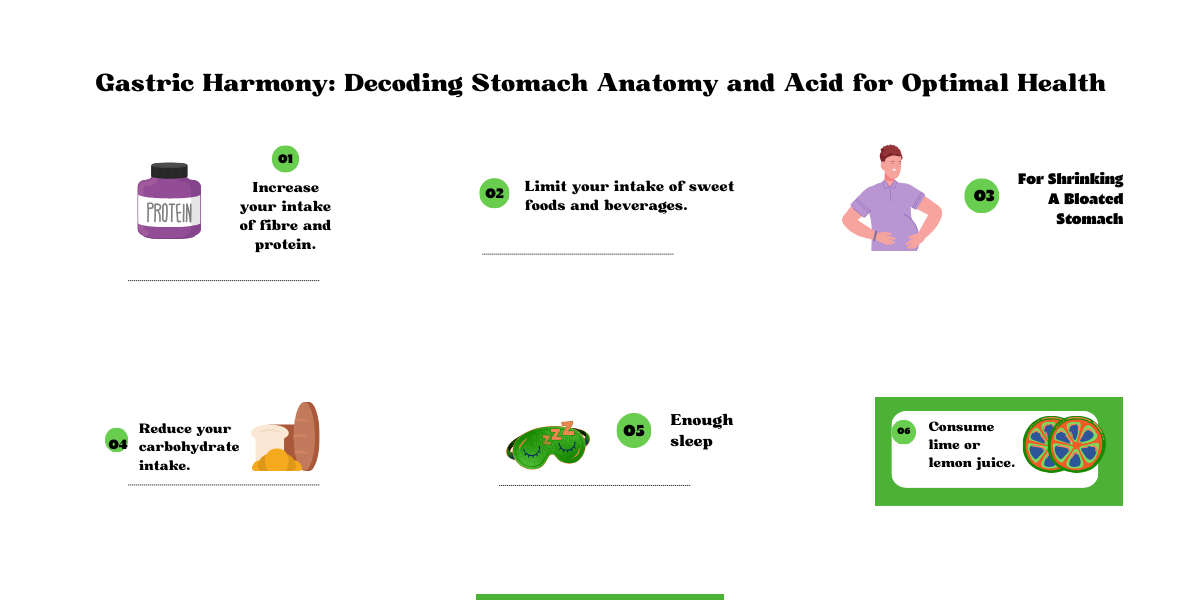Stomach Anatomy and Acid: Understanding Gastric Health
Gastric Harmony: Decoding Stomach Anatomy and Acid for Optimal Health
Stomach Anatomy and Acid: Understanding Gastric Health
The stomach is a remarkable organ, serving as the central hub for food digestion and nutrient absorption in the body. At the core of its functionality is gastric acid, a potent substance that plays a pivotal role in breaking down food. In this blog post, we will embark on a journey through stomach anatomy and the fascinating world of gastric acid, shedding light on their roles in maintaining optimal gastric health.
Stomach Anatomy: A Complex Machine
Before delving into the acid, let’s take a closer look at the stomach’s anatomy:
-
Stomach Layers:
- The stomach has four main layers: mucosa, submucosa, muscularis, and serosa. Each layer has a specific function in the digestive process.
-
Gastric Regions:
- The stomach is divided into regions, including the fundus, body, antrum, and pylorus, each responsible for different aspects of digestion.
-
Gastric Blood Supply:
- A robust blood supply nourishes the stomach, ensuring that it can function optimally.
The Role of Gastric Acid
-
Hydrochloric Acid (HCl):
- Gastric acid, primarily HCl, is secreted by specialized cells in the stomach lining known as parietal cells. This acid has several essential functions:
- Digestion: HCl activates pepsinogen, an enzyme that breaks down proteins into smaller, more digestible fragments.
- Microbial Defense: The acidic environment of the stomach serves as a defense mechanism against harmful microbes that may be ingested with food.
- Nutrient Absorption: It aids in the absorption of certain nutrients like iron and calcium.
-
Mucous and Bicarbonate:
- To prevent the stomach from digesting itself, mucous cells secrete a thick, protective layer, while bicarbonate ions neutralize excess acid.
Maintaining Gastric Health
-
Balanced Diet:
- Consuming a diet rich in fiber, whole grains, fruits, and vegetables supports gastric health.
-
Hydration:
- Staying well-hydrated helps maintain the mucous layer and the secretion of gastric juices.
-
Moderation:
- Avoid overindulging in spicy, acidic, or greasy foods, as these can irritate the stomach lining.
-
Stress Management:
- Chronic stress can affect gastric health. Employ stress-reduction techniques like meditation and relaxation exercises.
-
Medical Conditions:
- Certain medical conditions, like gastritis or gastroesophageal reflux disease (GERD), can disrupt gastric health. Seek medical attention if you experience persistent digestive issues.
Conclusion
Understanding stomach anatomy and the role of gastric acid is essential for maintaining optimal gastric health. This intricate system ensures that the food we consume is effectively broken down and nutrients are absorbed efficiently. By embracing a balanced diet, staying hydrated, managing stress, and seeking medical advice when necessary, we can nurture our gastric health and promote overall well-being. After all, a healthy stomach is the foundation of good digestion and nutrient absorption in our bodies.





